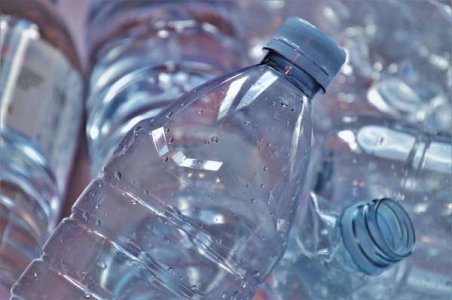How much plastic is in your brain? New study reveals a shocking spoonful of truth!
- Replies 0
As we age, we often become more conscious of our health and the factors that could impact our well-being.
But there's one potential threat that might not be on everyone's radar: the presence of microplastics and nanoplastics in our bodies, particularly in our brains.
A groundbreaking study has recently shed light on this alarming issue, and the findings are enough to make anyone sit up and take notice.
The study, led by Matthew Campen, Regents’ Professor and professor of pharmaceutical sciences at the University of New Mexico in Albuquerque, found that cadaver brain samples contained seven to 30 times more tiny shards of plastic than their kidneys and liver.
“The concentrations we saw in the brain tissue of normal individuals, who had an average age of around 45 or 50 years old, were 4,800 micrograms per gram, or 0.48% by weight,” Campen explained.
To put it into perspective, that's the equivalent of an entire standard plastic spoon in your brain.
This increase in plastic concentration is not just a small uptick; it's a staggering 50% higher than autopsy brain samples from 2016. “That would mean that our brains today are 99.5% brain and the rest is plastic,” Campen stated.

The study also found that individuals diagnosed with dementia before their death had three to five times more shard-like plastic fragments in their brains compared to healthy brains.
These fragments, too small for the naked eye to see, were concentrated in the walls of arteries and veins of the brain as well as in the brain’s immune cells.
While the presence of these plastics is concerning, it's important to note that the study does not suggest that microplastics cause dementia.
However, the impaired blood-brain barrier and clearance mechanisms in dementia may create a pathway for plastics to accumulate in the brain.
Phoebe Stapleton, an associate professor of pharmacology and toxicology at Rutgers University, who was not involved in the study, emphasized the need for further research to understand how these particles may be interacting with cells and if they have toxicological consequences.
The study's findings align with the rapid increase in plastic manufacture and pollution.
Dr. Philip Landrigan, director of the Program for Global Public Health and the Common Good at Boston College, pointed out that more than half of all plastic ever made has been produced since 2002, with production expected to double by 2040.
Landrigan, who was not involved in the new study, also led a March 2023 report from the Minderoo – Monaco Commission on Plastics and Human Health, which determined that plastics are associated with harms to human health at every stage of the plastic lifecycle.
Nanoplastics, in particular, are worrisome because they can potentially interrupt cellular processes and deposit endocrine-disrupting chemicals, such as bisphenols, phthalates, flame retardants, heavy metals, and PFAS.
These disruptors can lead to serious health issues, including reproductive malformations and infertility.
Despite the American Chemistry Council's stance that current evidence doesn't show a risk to human health from microplastics or nanoplastics in foods, the study's findings suggest that we should start taking protective action.
The study, published in Nature Medicine, examined brain, kidney, and liver tissues from forensic autopsies conducted in 2016 and 2024, as well as brains from people who died between 1997 and 2013.
The frontal cortex, the area of the brain associated with thinking and reasoning, was the focus of the brain tissue samples.
Source: NBC News / Youtube.
Researchers believe that the brain is pulling in the very smallest nanostructures, roughly the size of two COVID viruses side by side.
These nanoplastics may be hijacking their way through the body and crossing the blood-brain barrier, potentially with the fats we consume.
Given that the human brain is about 60% fat by weight, it's a prime target for these plastic particles. Diet is the main route of exposure, but some nanoplastics are also airborne, adding to the complexity of the issue.
To reduce exposure to plastics, experts suggest practical steps such as avoiding single-use plastics, using glass or metal containers instead of plastic, and advocating for restrictions on plastic manufacture and the use of safer chemicals in plastics.
Also read: Are microplastics hiding in your favorite fast food? Find out!

Have you made any changes to reduce your plastic consumption? What challenges have you faced in doing so? Share your thoughts and experiences with us in the comments below!
But there's one potential threat that might not be on everyone's radar: the presence of microplastics and nanoplastics in our bodies, particularly in our brains.
A groundbreaking study has recently shed light on this alarming issue, and the findings are enough to make anyone sit up and take notice.
The study, led by Matthew Campen, Regents’ Professor and professor of pharmaceutical sciences at the University of New Mexico in Albuquerque, found that cadaver brain samples contained seven to 30 times more tiny shards of plastic than their kidneys and liver.
“The concentrations we saw in the brain tissue of normal individuals, who had an average age of around 45 or 50 years old, were 4,800 micrograms per gram, or 0.48% by weight,” Campen explained.
To put it into perspective, that's the equivalent of an entire standard plastic spoon in your brain.
This increase in plastic concentration is not just a small uptick; it's a staggering 50% higher than autopsy brain samples from 2016. “That would mean that our brains today are 99.5% brain and the rest is plastic,” Campen stated.

Human brain samples collected at autopsy in early 2024 contained significantly higher levels of tiny shards of plastic compared to samples from eight years earlier. Image source: Julita / Pixabay.
The study also found that individuals diagnosed with dementia before their death had three to five times more shard-like plastic fragments in their brains compared to healthy brains.
These fragments, too small for the naked eye to see, were concentrated in the walls of arteries and veins of the brain as well as in the brain’s immune cells.
While the presence of these plastics is concerning, it's important to note that the study does not suggest that microplastics cause dementia.
However, the impaired blood-brain barrier and clearance mechanisms in dementia may create a pathway for plastics to accumulate in the brain.
Phoebe Stapleton, an associate professor of pharmacology and toxicology at Rutgers University, who was not involved in the study, emphasized the need for further research to understand how these particles may be interacting with cells and if they have toxicological consequences.
The study's findings align with the rapid increase in plastic manufacture and pollution.
Dr. Philip Landrigan, director of the Program for Global Public Health and the Common Good at Boston College, pointed out that more than half of all plastic ever made has been produced since 2002, with production expected to double by 2040.
Landrigan, who was not involved in the new study, also led a March 2023 report from the Minderoo – Monaco Commission on Plastics and Human Health, which determined that plastics are associated with harms to human health at every stage of the plastic lifecycle.
Nanoplastics, in particular, are worrisome because they can potentially interrupt cellular processes and deposit endocrine-disrupting chemicals, such as bisphenols, phthalates, flame retardants, heavy metals, and PFAS.
These disruptors can lead to serious health issues, including reproductive malformations and infertility.
Despite the American Chemistry Council's stance that current evidence doesn't show a risk to human health from microplastics or nanoplastics in foods, the study's findings suggest that we should start taking protective action.
The study, published in Nature Medicine, examined brain, kidney, and liver tissues from forensic autopsies conducted in 2016 and 2024, as well as brains from people who died between 1997 and 2013.
The frontal cortex, the area of the brain associated with thinking and reasoning, was the focus of the brain tissue samples.
Source: NBC News / Youtube.
Researchers believe that the brain is pulling in the very smallest nanostructures, roughly the size of two COVID viruses side by side.
These nanoplastics may be hijacking their way through the body and crossing the blood-brain barrier, potentially with the fats we consume.
Given that the human brain is about 60% fat by weight, it's a prime target for these plastic particles. Diet is the main route of exposure, but some nanoplastics are also airborne, adding to the complexity of the issue.
To reduce exposure to plastics, experts suggest practical steps such as avoiding single-use plastics, using glass or metal containers instead of plastic, and advocating for restrictions on plastic manufacture and the use of safer chemicals in plastics.
Also read: Are microplastics hiding in your favorite fast food? Find out!
Key Takeaways
- Human brain samples collected at autopsy in early 2024 contained significantly higher levels of tiny shards of plastic compared to samples from eight years earlier.
- The study, which assessed brain, kidney, and liver tissues, found the brain to contain seven to 30 times more plastic fragments than other organs.
- Researchers also discovered increased levels of plastic shard-like fragments in the brains of individuals diagnosed with dementia prior to death.
- The study highlights potential health risks associated with nanoplastics, suggesting the need for further research and action to reduce human exposure to plastics.
Have you made any changes to reduce your plastic consumption? What challenges have you faced in doing so? Share your thoughts and experiences with us in the comments below!






